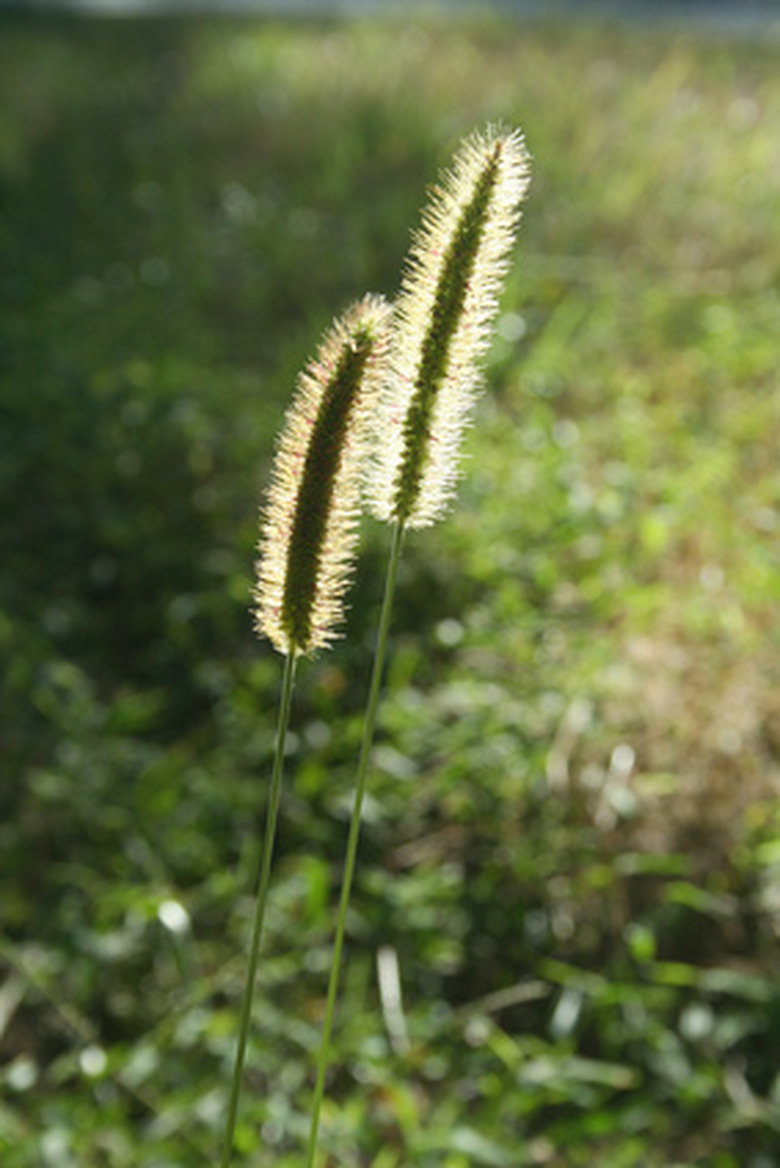Common Michigan Lawn Weeds
Weeds are opportunistic, unwanted lawn plants that exploit unhealthy, sparsely growing lawn environments. Michigan lawn weeds come in two basic varieties: grassy weeds which resemble lawn grass, and broadleaf weeds which have a broader, thicker leaf structure. Weed prevention and removal methods include pre- and post-emergent herbicides, mowing and physical removal.
Annual Bluegrass
Annual Bluegrass (Poa annua) is a grassy weed that grows in dense clumps. Apply pre-emergent herbicides during the spring and fall to prevent Annual Bluegrass germination in the early spring and late summer. Pre-emergent herbicides prevent weeds from establishing in the lawn.
Crabgrass
Crabgrass (Digitaria sanguinalis) is a clumping, grassy weed with light green, coarse blades extending outward from a central node. Apply pre-emergent herbicides for four consecutive days in the early spring when the soil temperature reaches 55 degrees F.
- Weeds are opportunistic, unwanted lawn plants that exploit unhealthy, sparsely growing lawn environments.
- Crabgrass (Digitaria sanguinalis) is a clumping, grassy weed with light green, coarse blades extending outward from a central node.
Yellow Foxtail
Yellow Foxtail (Setaria glauca) is an erect, clumping, grassy weed that germinates in mid-spring when the soil temperature reaches 65 degrees F. Do not fertilize, aerate or over-seed the lawn when Yellow Foxtail is germinating, as this may induce weed growth.
Mouseear Chickweed
Mouseear Chickweed (Cerastium vulgatum) is a low-growing, perennial, broadleaf weed that is found on lawns with a low cut height. Mouseear leaves are dark green, thick and hairy.
Common Milkweed
Common Milkweed (Asclepias syriaca) is a perennial, broadleaf weed with leaves extending laterally from a single vertical shoot. Prevent the appearance of this weed with routine mowing. Milkweed is found on unmaintained lawn areas and prefers direct sunlight and well-drained soils.
Prostrate Knotweed
Prostrate Knotweed (Polygonum aviculare) is a summer annual, broadleaf weed that has green leaves extending from a dense network of multiple stems. Hand-pulling and post-emergent herbicides (herbicides that kill weeds after they have germinated) are the most effective method of removal.
- Yellow Foxtail (Setaria glauca) is an erect, clumping, grassy weed that germinates in mid-spring when the soil temperature reaches 65 degrees F. Do not fertilize, aerate or over-seed the lawn when Yellow Foxtail is germinating, as this may induce weed growth.
- Mouseear Chickweed (Cerastium vulgatum) is a low-growing, perennial, broadleaf weed that is found on lawns with a low cut height.
